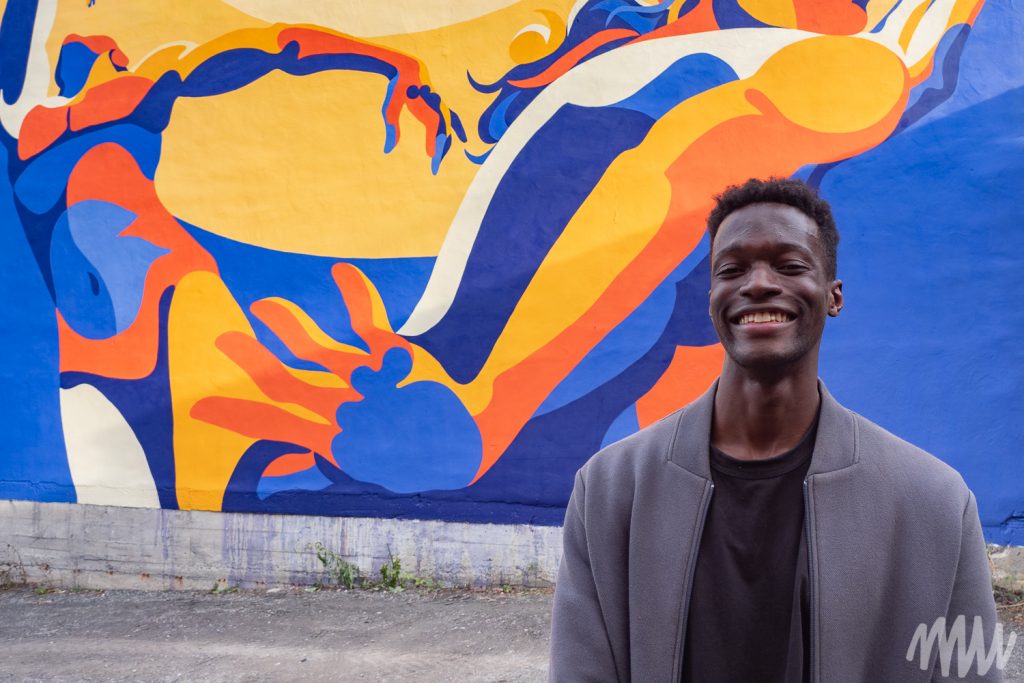Public murals serve to build a sense of community. In public spaces, they democratize the art-viewing experience and trigger social transformation. To celebrate its 50th anniversary season, Les Ballets Jazz de Montréal (BJM), in collaboration with MU, an organization that aims to beautify Montreal with mural art, unveiled a large-scale permanent mural located at 4580 avenue de l’Hôtel-de-Ville, in the heart of the city’s dense Plateau neighbourhood.
The mural transforms an otherwise nondescript parking lot, across the city’s Conservatoire de musique de Montréal, and is part of MU’s Tribute to Montreal’s Great Artists project paying homage to the city’s cultural leaders. Previous murals have honoured Leonard Cohen, Alanis Obomsawin, Oscar Peterson, Michel Tremblay and others.
Franco Égalité, painter of the fresco, sees his work as a meeting place for the public. “The power of a mural is that it’s a gigantic window that transports the viewer to another universe,” he said. The universe of this specific mural is Les Ballets Jazz de Montréal’s past and future.
Égalité recognizes the company as “ambassadors [and] one of the city’s artistic pillars.” The artist did his homework and visited the BJM studios to have long conversations with the company dancers and directors and to better understand the movement. “I was inspired [and] began to develop ideas about complexity, contortion and the softness in the movements,” he said.

The original directors and founders of the company (Geneviève Salbaing, Eva von Genscy and Eddy Toussaint) always made it clear that it’s the dancers who are at the forefront, and the stars, said Égalité. Referring to the mural’s depiction, Alexandra Damiani, the newly appointed artistic director, said, “The public can relate to these dancers.”
Five dancers representing five decades are visible in the public artwork. Depicted in a circle, “The dancers connect and are not separated. The same is true at BJM – our history is connected,” said Damiani. At the top of the mural, two bodies on either side represent the jazz and ballet traditions, while the central figure in the middle is falling. “It suggests risk-taking and a precarious balance,” said Damiani. “This dancer mirrors the unknown,” added Égalité.

The bottom figures represent the contemporary face of the company and suggest “where BJM is going,” said Damiani. The twist in the dancer’s posture, on the bottom right, proposes that she could be moving forward but also acknowledging where she’s coming from, said Égalité. He pointed out the “delicacy of her face, the internal quality of her gaze,” while Damiani indicated the details of her fingers and hand “and the sense of vulnerability” to her stance.
Above all, Égalité said, the image of the warmth of the sun permeates the entire mural. Positioned on a wall that receives sunlight for the better part of the day, its colours, like the company itself, appear to be burning ever brighter.
Tagged:






